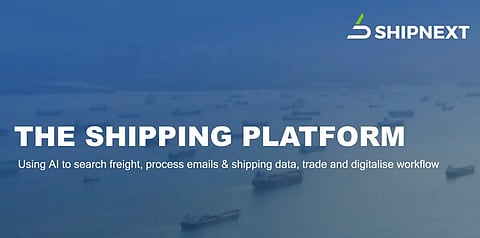

In an industry where every hour of operation counts, the shipping sector constantly seeks new ways to improve efficiency and minimize losses. Predictive maintenance, especially when enhanced by artificial intelligence, is becoming a game-changer in this domain. By anticipating failures before they occur, shipping companies https://shipnext.com/ are finding smarter ways to reduce unplanned downtime and cut unnecessary expenses without compromising safety or performance.
Downtime in maritime logistics isn't just a technical hiccup — it's a financial sinkhole. Every unexpected stop can delay cargo, disrupt schedules, and even damage customer trust. Traditional maintenance routines — based on fixed intervals — often either overdo the checks or miss critical failures entirely. AI changes that. It learns from operational data, adapts to usage patterns, and spots irregularities far earlier than human eyes or standard systems can. This shift from reactive to predictive maintenance can transform both short-term budgeting and long-term strategic planning.
Artificial intelligence brings precision to a process long plagued by generalizations. With real-time data from sensors embedded in engines, hulls, and cargo systems, AI doesn’t just flag problems — it understands them in context. It differentiates between normal wear and a developing failure, guiding maintenance crews toward the parts that truly need attention. Machine learning models also adjust over time, improving their accuracy the longer they're deployed. This means the longer a ship runs with AI, the more efficient and personalized its maintenance becomes.
For AI to be effective, it needs data — but not just any data. The kind of insights that lead to cost-saving decisions come from:
Vibration analysis sensors that detect mechanical anomalies.
Thermal cameras and heat mapping for spotting overheating components.
Oil and fluid sensors to monitor chemical composition changes.
GPS and route data that track environmental stresses.
Maintenance logs and repair histories integrated into the model.
Each of these streams contributes a piece to the puzzle, allowing the AI to build a full picture of a vessel's operational health. By interpreting them collectively, the system can prioritize repairs and plan interventions with surgical precision.
Adopting AI-driven maintenance isn't without hurdles. Legacy systems on older ships may not support the sensors and data integration required. Crew members might lack training to interpret AI outputs effectively, leading to underutilized potential. Moreover, initial investments in infrastructure and software may raise eyebrows in cost-sensitive operations. Still, these challenges are far from insurmountable. Modular IoT retrofits can bring older vessels online, while user-friendly interfaces and crew training programs make the tech more accessible. In many cases, early adopters have reported full ROI in under two years due to saved fuel, fewer emergency repairs, and optimized schedules.
While reducing mechanical failures is a clear benefit, predictive maintenance has a ripple effect throughout the shipping operation. Fleet managers gain a bird’s-eye view of ship health across regions. Port scheduling becomes smoother, since unscheduled dockings are minimized. Insurance costs may be lowered as systems demonstrate reduced risk. Most importantly, trust grows — both with clients and regulatory bodies — because maintenance becomes proactive rather than reactive.
As shipping continues to digitize, AI won’t just be an add-on — it will become the backbone of vessel management. Future ships might communicate their needs to maintenance crews before docking, auto-order replacement parts en route, or even self-diagnose minor faults without human intervention. Integration with other systems, like weather prediction and fuel optimization algorithms, will only deepen AI’s role in operations. What we're seeing now is only the beginning of a larger shift in how ships are run, maintained, and managed across global routes.
AI-powered predictive maintenance is more than just a tech trend — it's a strategic imperative for modern shipping companies. By using intelligent systems to prevent breakdowns before they happen, fleets become more reliable, efficient, and cost-effective. And while challenges remain, the benefits — in saved time, money, and peace of mind — are already proving too significant to ignore. As the seas of logistics continue to shift, those who embrace smart maintenance today will be steering the future of maritime tomorrow.
